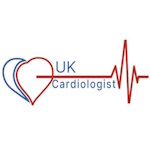Understanding valvular heart disease: causes, symptoms and treatments
Valvular heart disease is a condition that affects the valves of the heart, which are responsible for ensuring blood flows in the right direction through the heart’s chambers. When these valves become damaged or diseased, they can affect the heart’s ability to pump blood effectively, leading to various health complications.
Types of Valvular Heart Disease
There are four main valves in the heart: the mitral valve, aortic valve, tricuspid valve, and pulmonary valve. Valvular heart disease primarily involves two types of dysfunction:
- Valve Stenosis or a tight valve: This occurs when a valve becomes narrowed or stiffened, restricting blood flow. For example, aortic stenosis involves the narrowing of the aortic valve, which can lead to decreased blood flow from the heart to the body.
- Valve Regurgitation (Insufficiency) or a leaky valve: This occurs when a valve does not close properly, allowing blood to flow backward. Mitral valve regurgitation, for instance, involves the backflow of blood into the left atrium when the left ventricle contracts.
Causes and Risk Factors
Valvular heart disease can arise from various causes, including:
- Congenital defects: Some individuals are born with abnormal heart valves, such as bicuspid aortic valves, which can lead to problems later in life.
- Rheumatic fever: Once a common cause, rheumatic fever can damage heart valves, leading to rheumatic heart disease.
- Degenerative changes: As people age, the valves can undergo wear and tear, leading to conditions like calcific aortic stenosis.
- Infections: Infective endocarditis, a bacterial infection of the heart valves, can cause significant damage.
- Other conditions: Conditions like high blood pressure, heart attacks, or cardiomyopathy can also contribute to valvular heart disease.
Risk factors include older age, a history of infections such as rheumatic fever, high blood pressure, and lifestyle factors such as smoking.
Symptoms
The symptoms of valvular heart disease can vary depending on the severity and type of valve problem. Common symptoms include:
- Shortness of breath, especially during exertion
- Fatigue
- Palpitations or irregular heartbeats
- Chest pain
- Swelling in the legs, ankles, or abdomen (edema)
- Dizziness or fainting
In some cases, individuals may be asymptomatic and the condition is only discovered during a routine examination.
Diagnosis
Diagnosis typically involves a combination of patient history, physical examination, and diagnostic tests. A stethoscope can reveal abnormal heart sounds, such as murmurs, indicative of valve problems. Key diagnostic tests include:
- Echocardiogram: This ultrasound test provides detailed images of the heart valves and chambers, helping to assess valve function and blood flow.
- Electrocardiogram (ECG): This test records the electrical activity of the heart and can detect heart rhythm problems.
- Cardiac MRI or CT scan: These imaging tests can provide more detailed information about the structure of the heart and its valves.
- Cardiac catheterization: This invasive test measures the pressure in the heart and can help assess the severity of valve disease.
Treatment Options
Treatment for valvular heart disease depends on the severity of the condition and the specific valve affected. Options include:
- Medications: These may be prescribed to manage symptoms, reduce the risk of complications, or treat underlying conditions such as high blood pressure. Medications do not cure valvular disease but can help manage its effects.
- Lifestyle changes: Patients are often advised to adopt heart-healthy habits, such as maintaining a balanced diet, exercising regularly, quitting smoking, and managing stress.
- Surgical interventions: In more severe cases, surgery may be required to repair or replace the affected valve. Options include:
- Valve repair: Surgeons can often fix a faulty valve without replacing it, especially in cases of regurgitation.
- Valve replacement: If repair is not possible, the valve may be replaced with a mechanical valve (which requires lifelong anticoagulation therapy) or a bioprosthetic valve (made from animal tissue).
- Minimally invasive procedures: Techniques like transcatheter aortic valve replacement (TAVR) are less invasive alternatives to open-heart surgery, suitable for patients at high surgical risk.
Prognosis and Management
With appropriate treatment, many patients with valvular heart disease can lead normal lives, but ongoing monitoring is essential. Regular follow-ups with a cardiologist are crucial to manage the disease and prevent complications. Early diagnosis and treatment can significantly improve the outlook for patients with valvular heart disease.
Conclusion
Valvular heart disease is a serious condition that requires timely diagnosis and management to prevent complications. Advances in medical and surgical treatments have greatly improved outcomes for patients, allowing them to maintain a good quality of life. If you experience symptoms or have risk factors for valvular heart disease, consult a healthcare provider for evaluation and appropriate management.
Did you enjoy this? Share:

